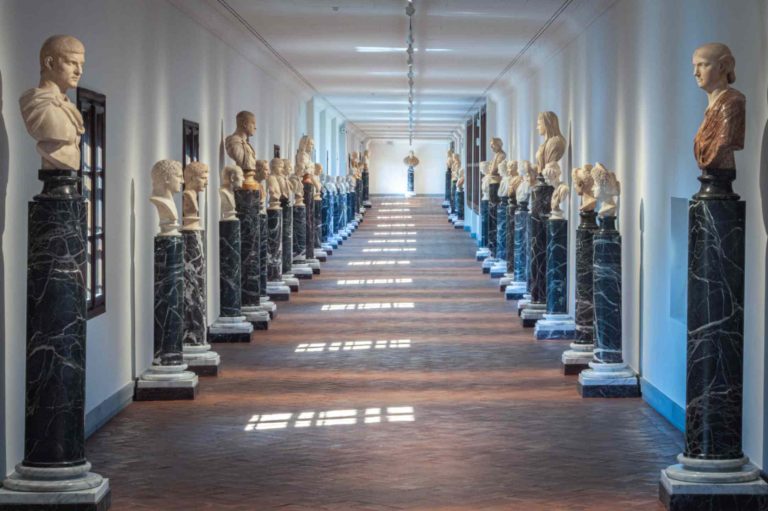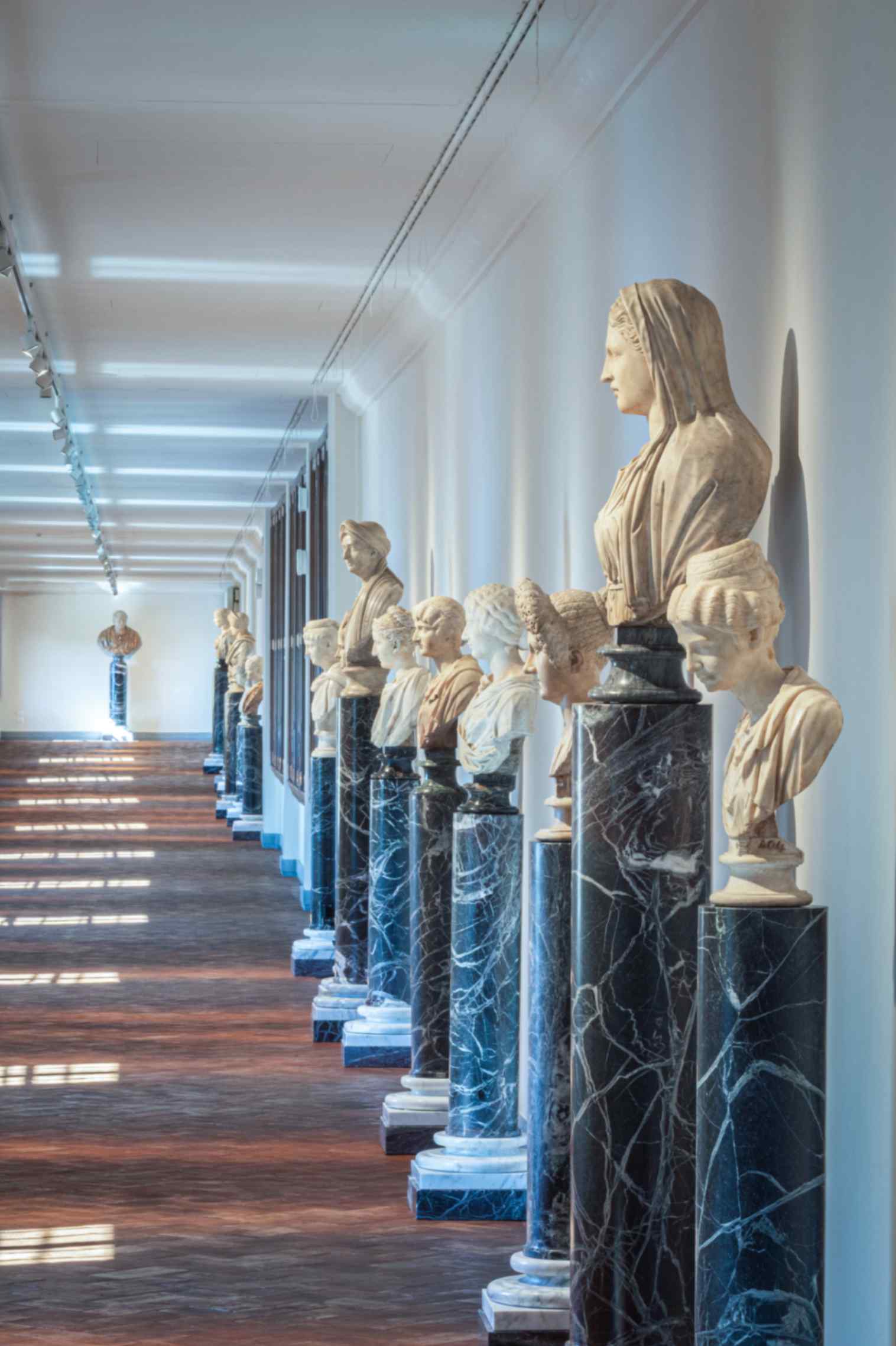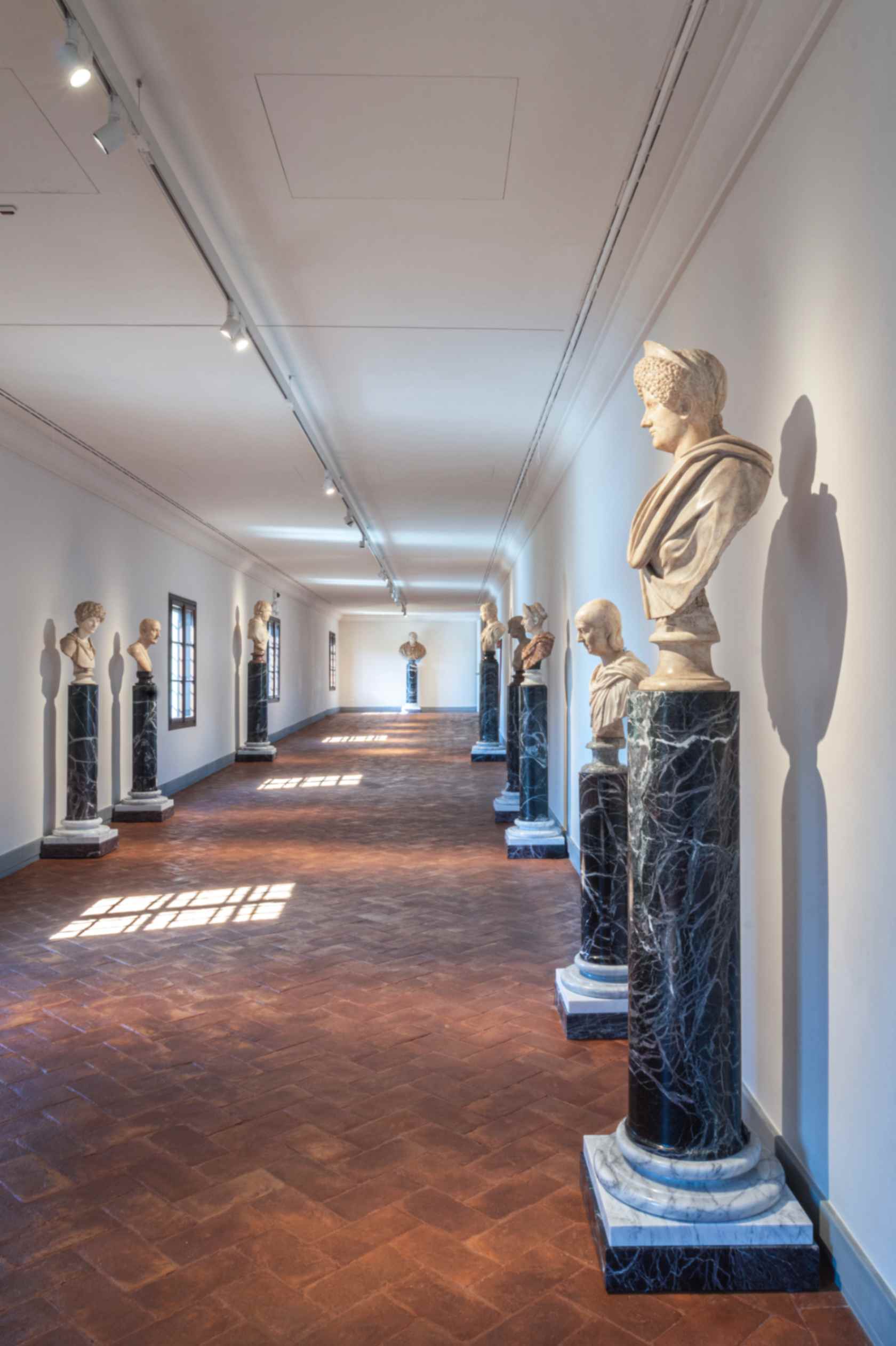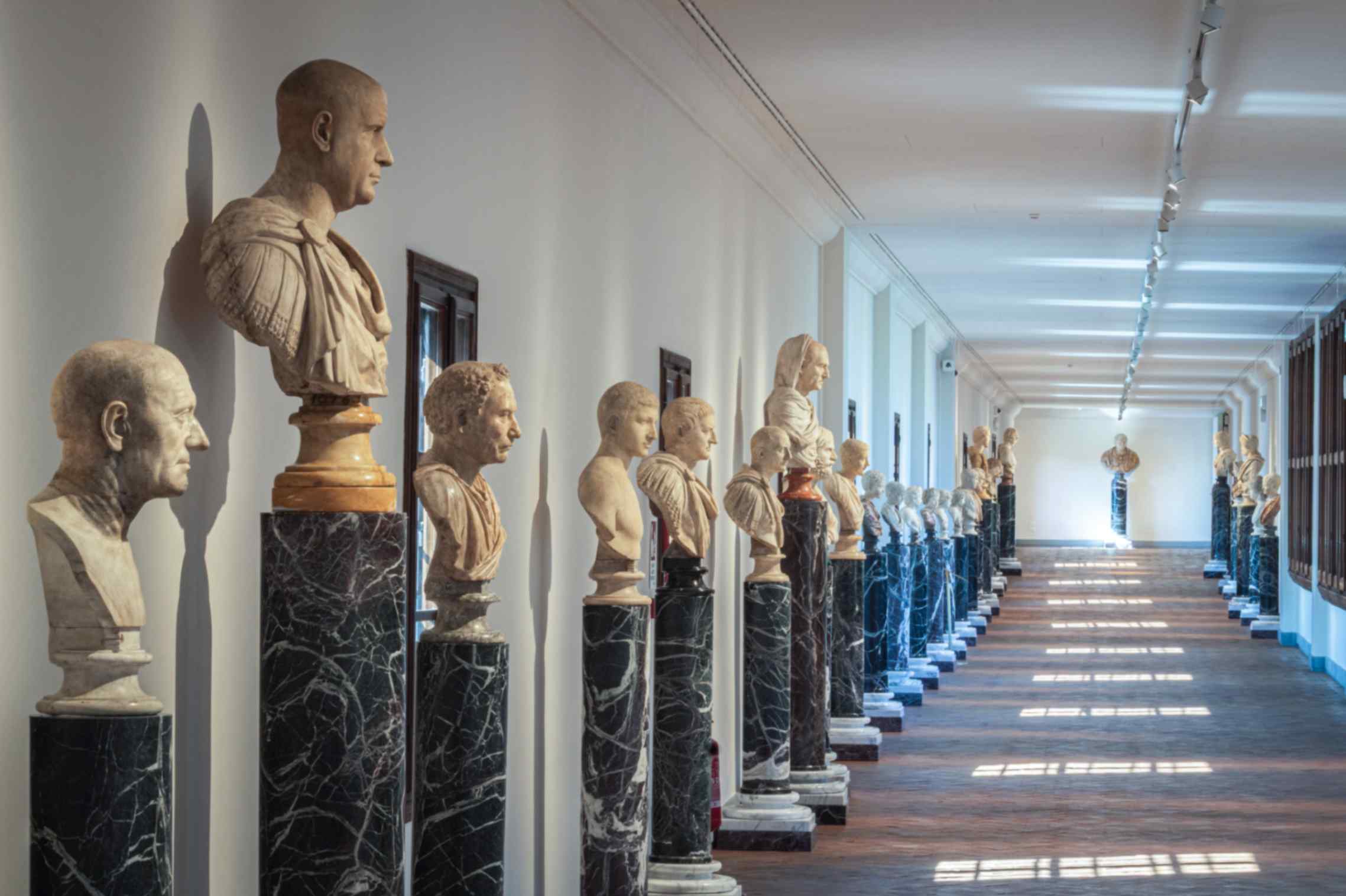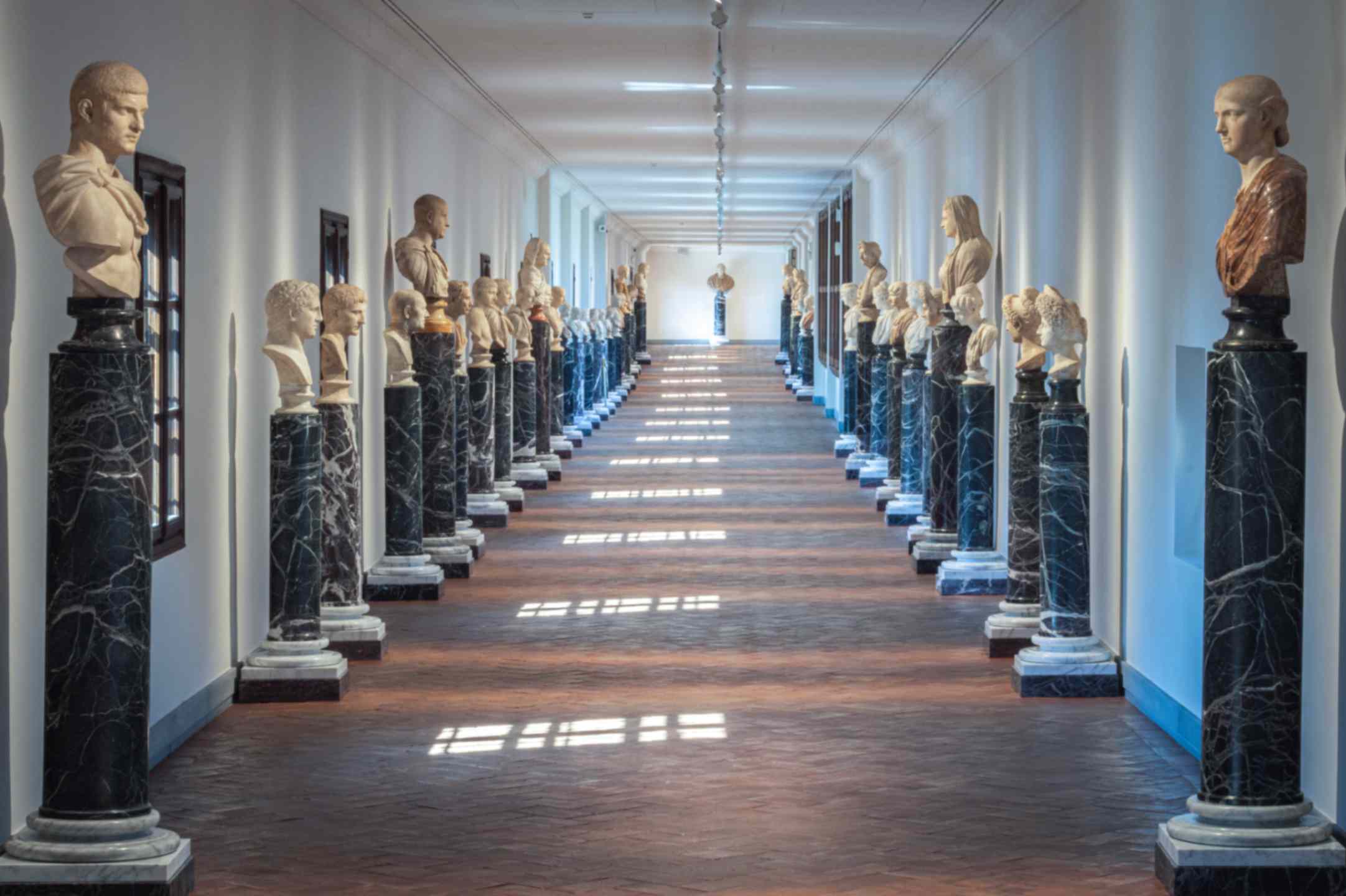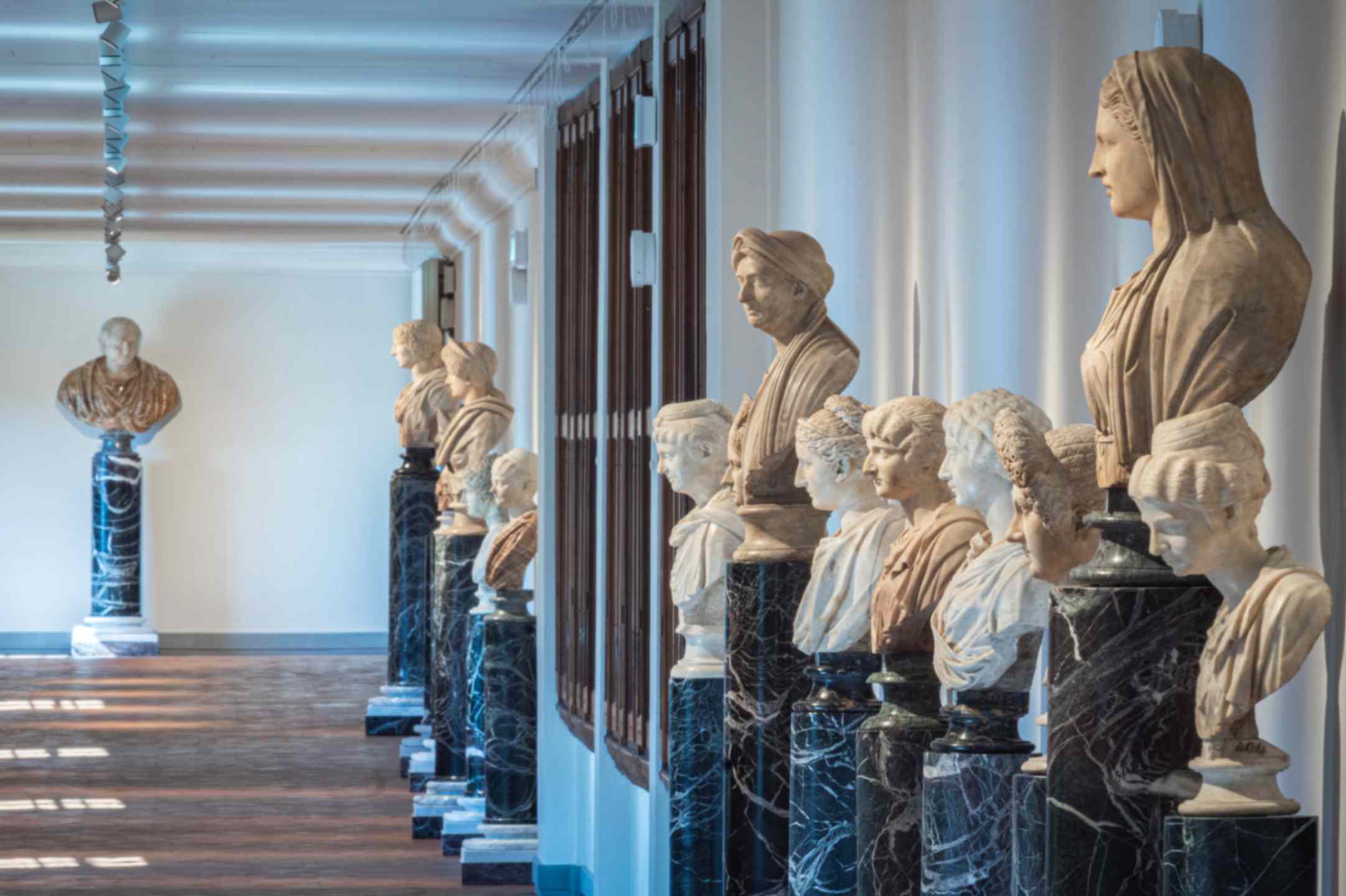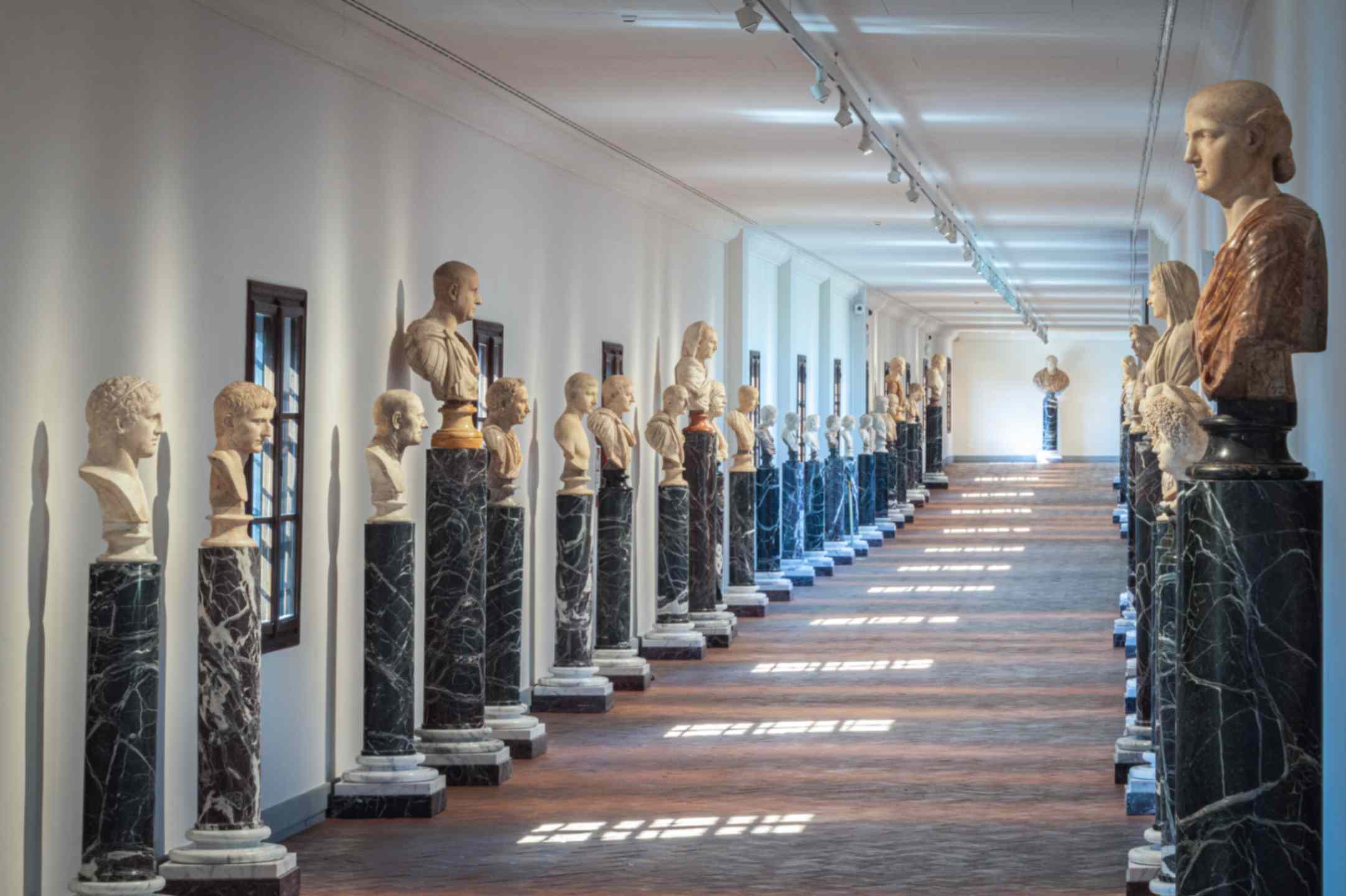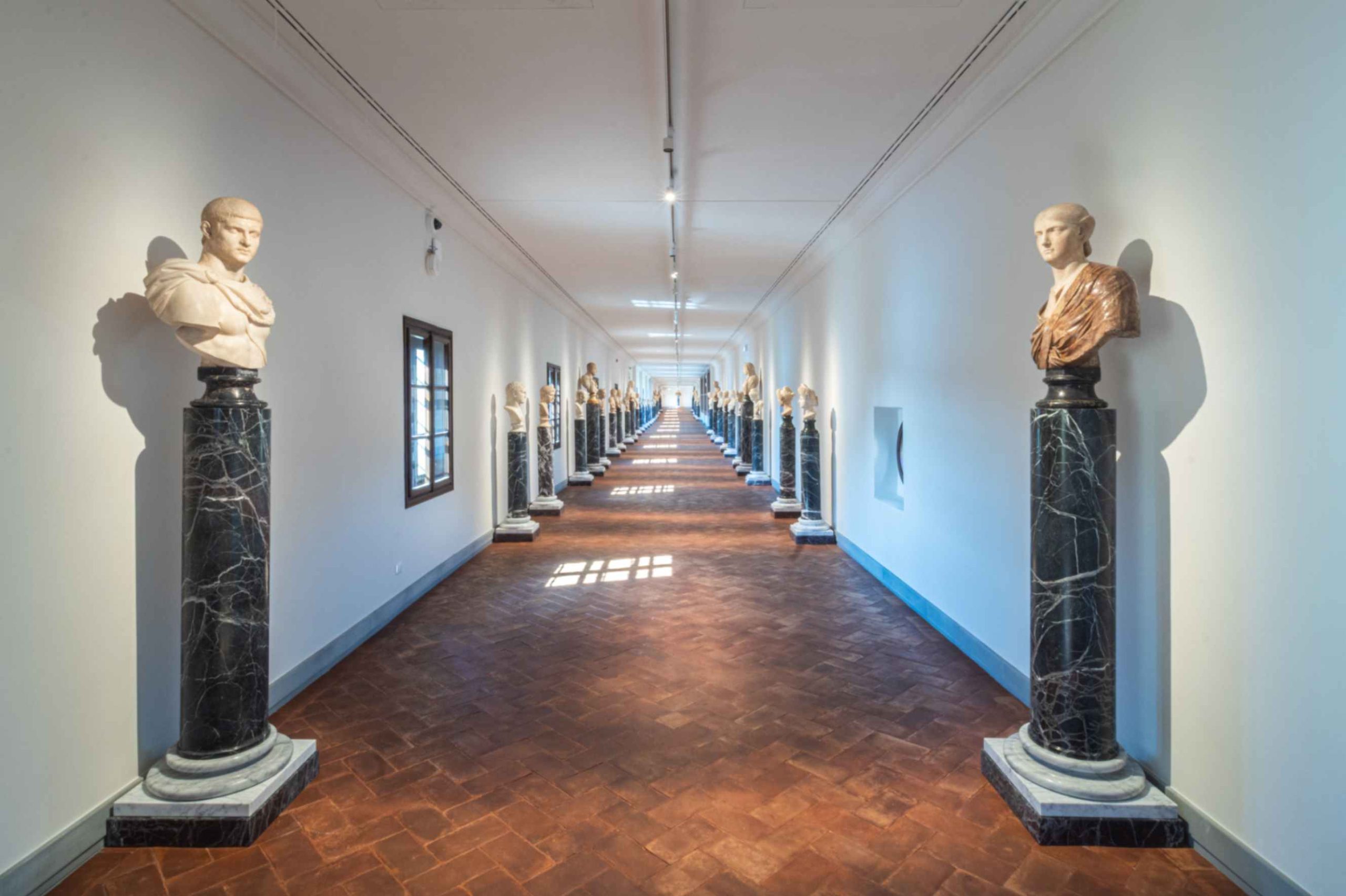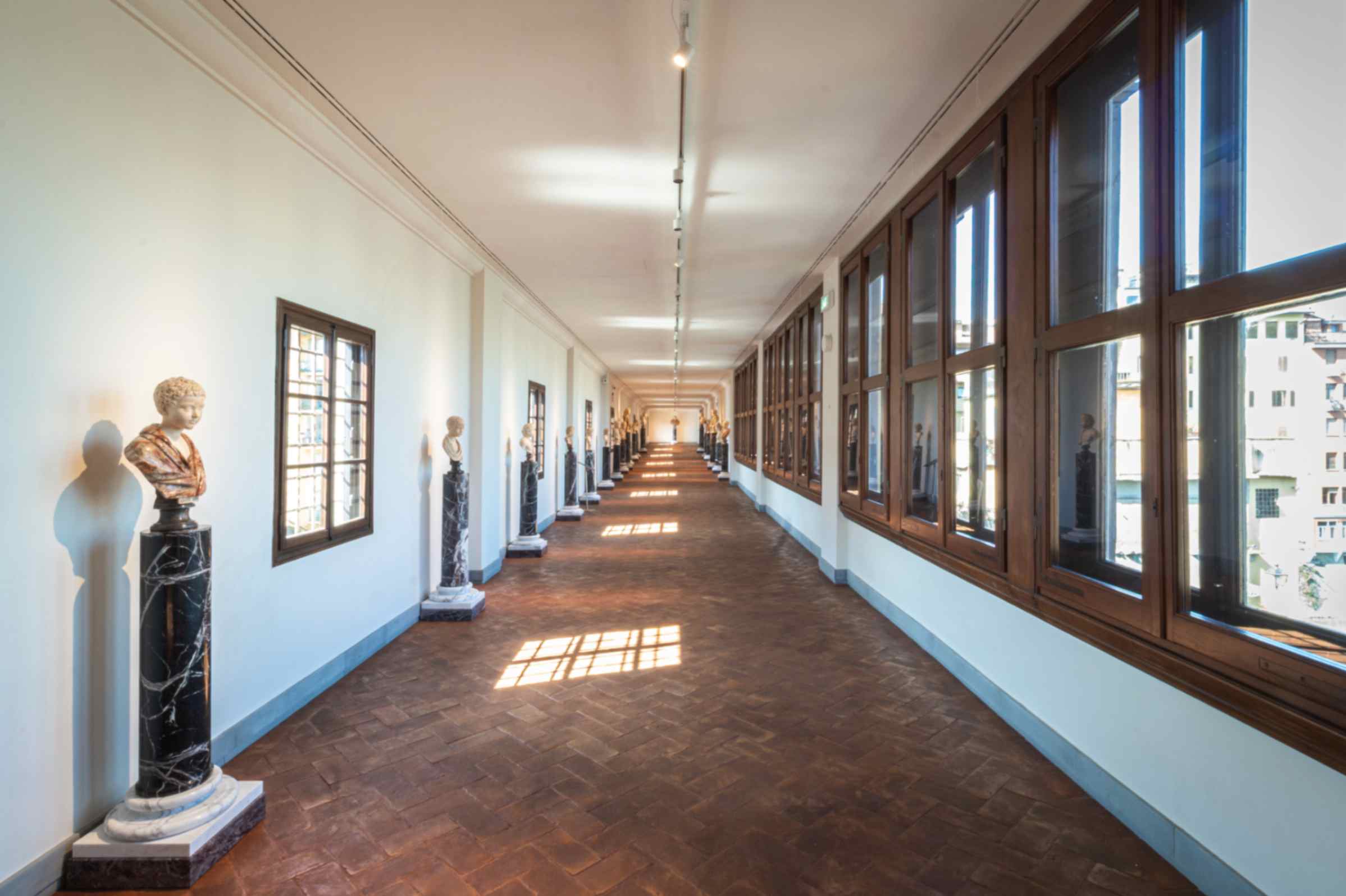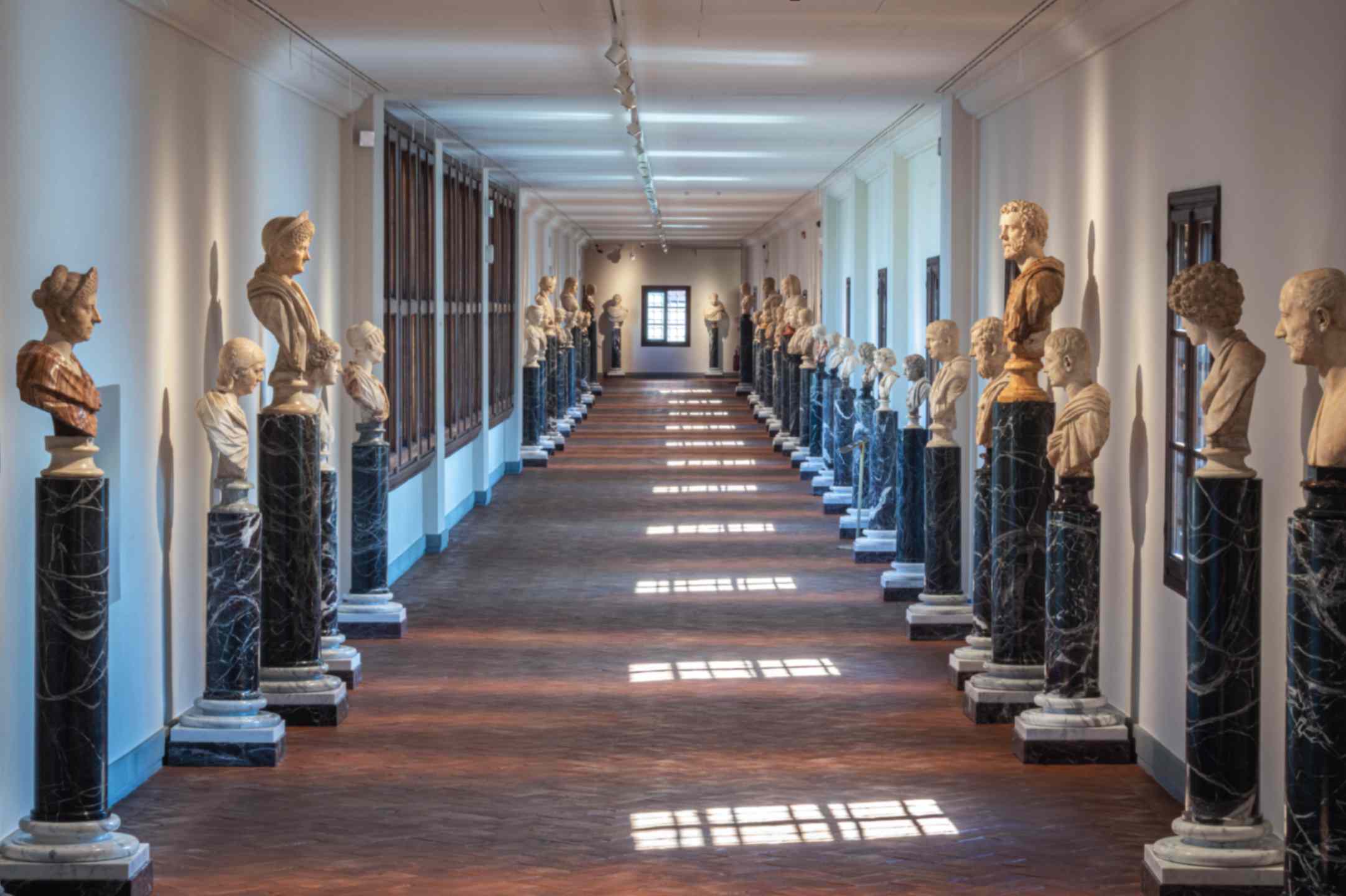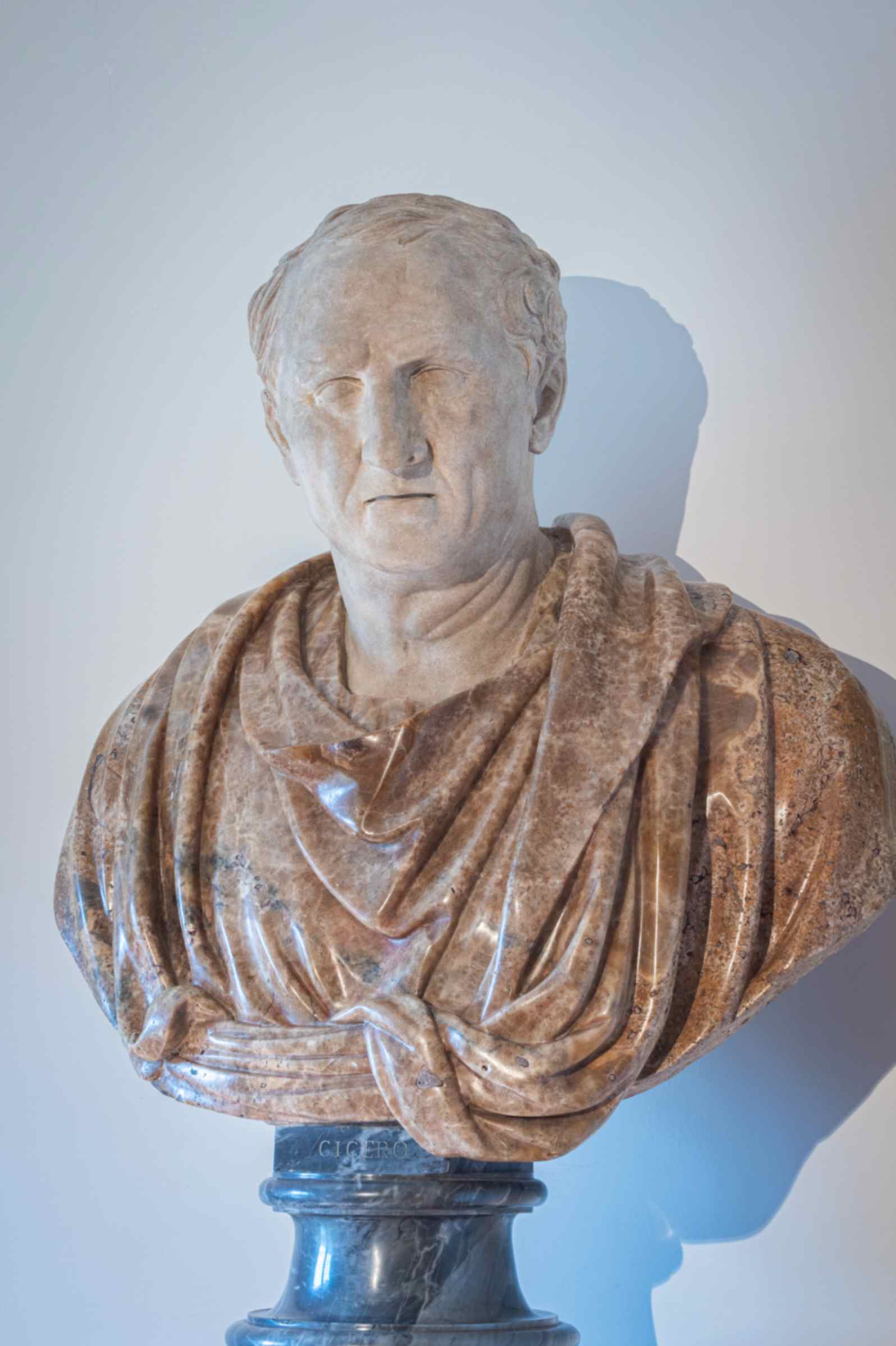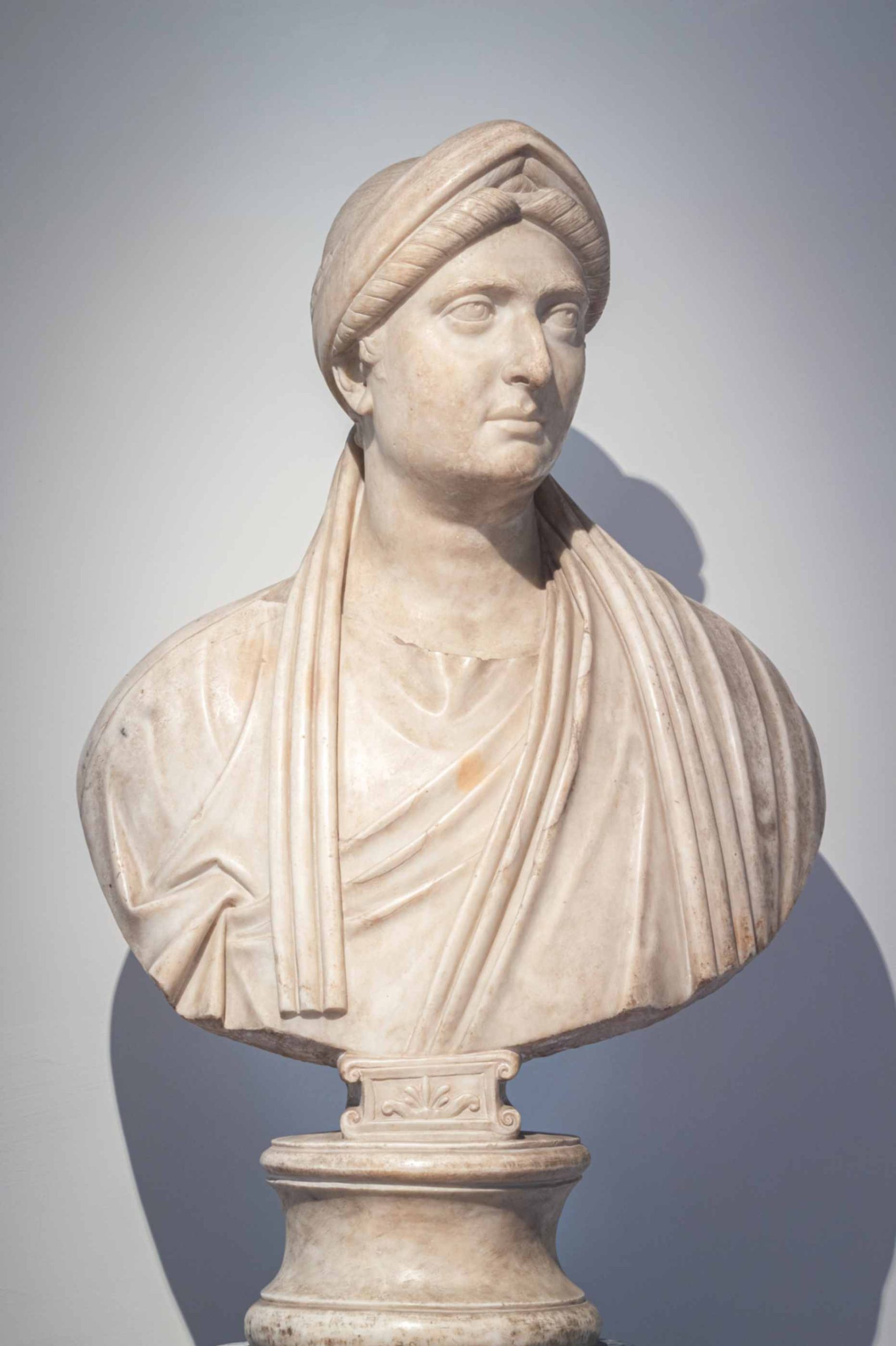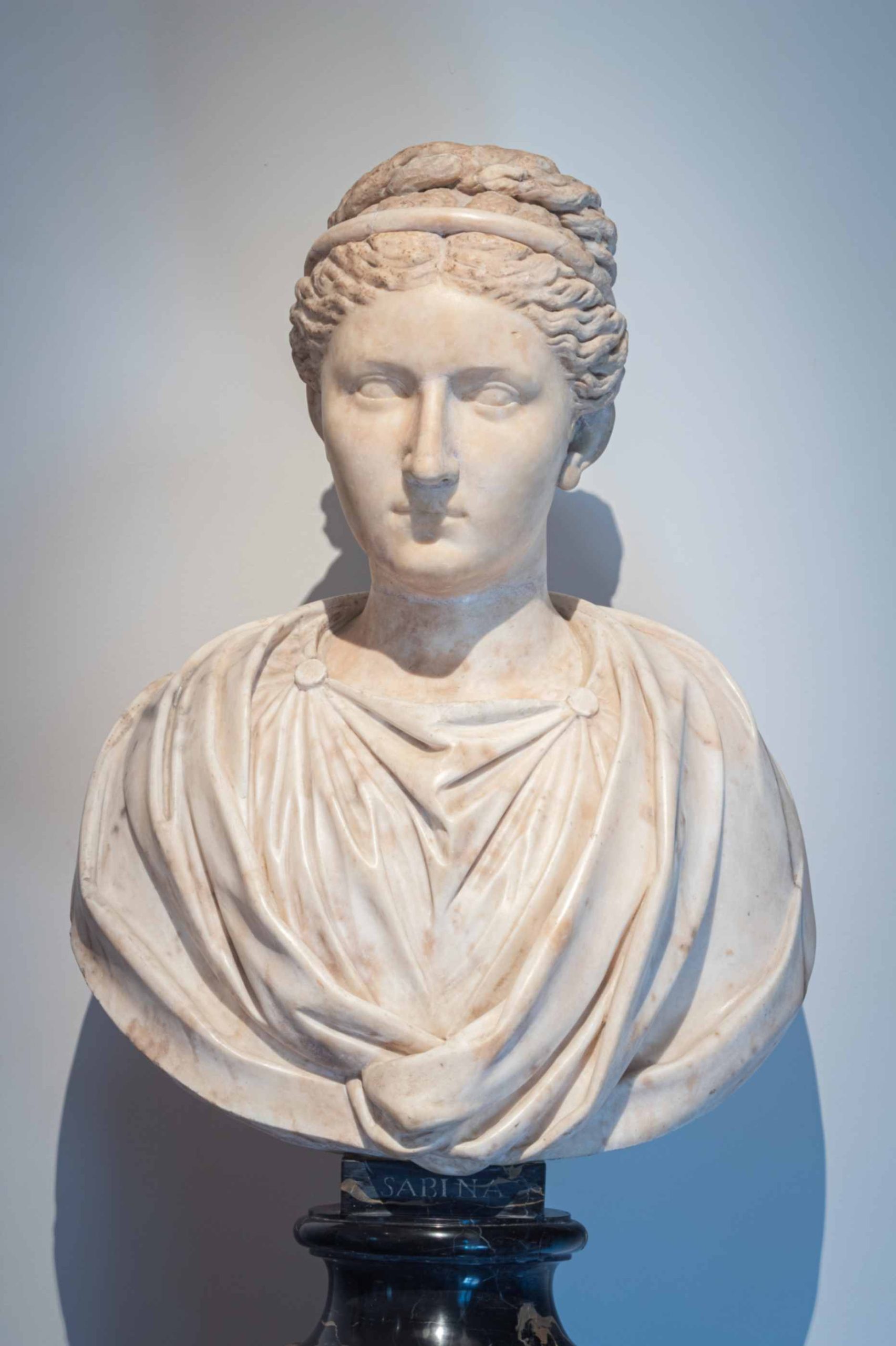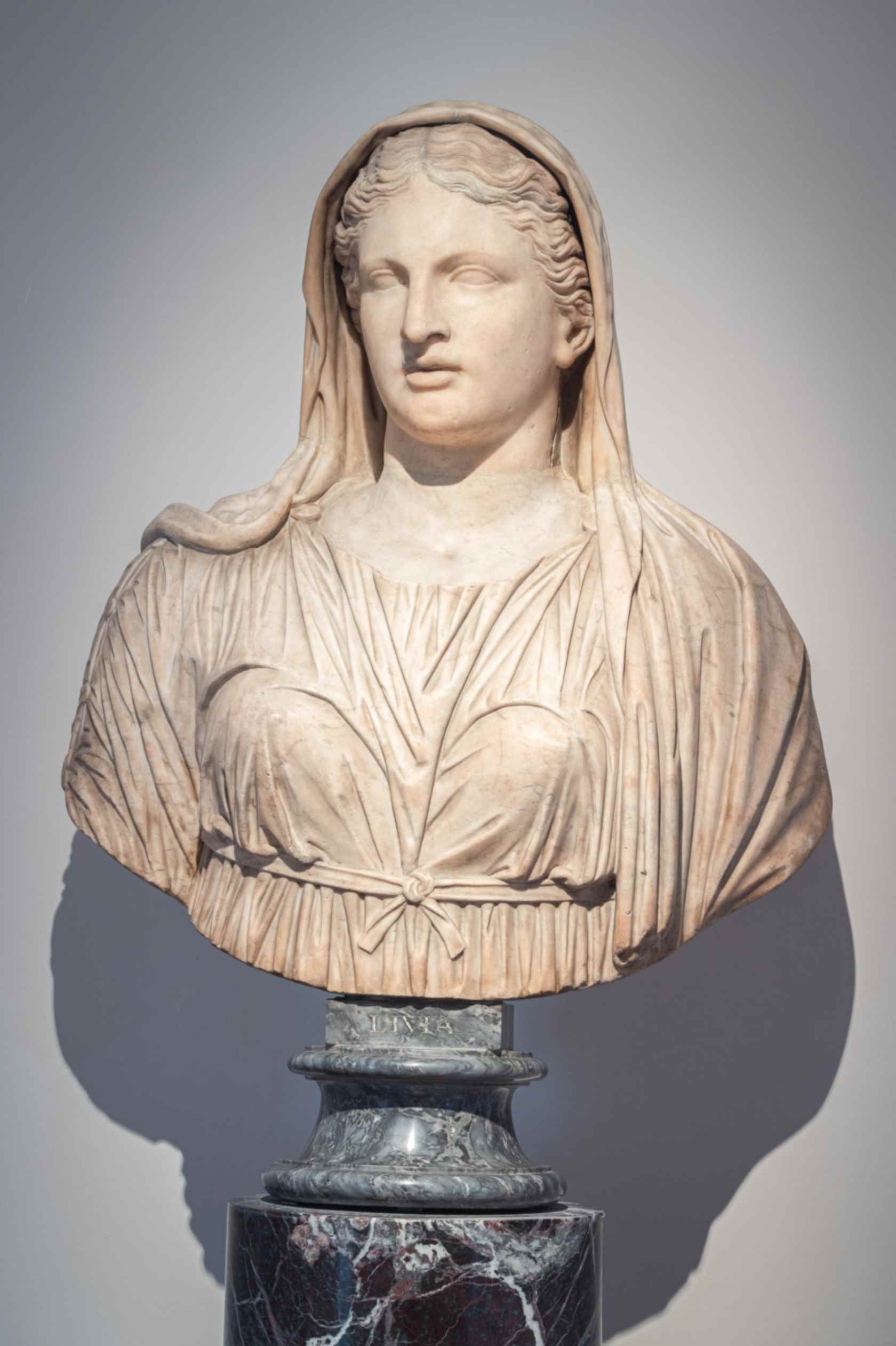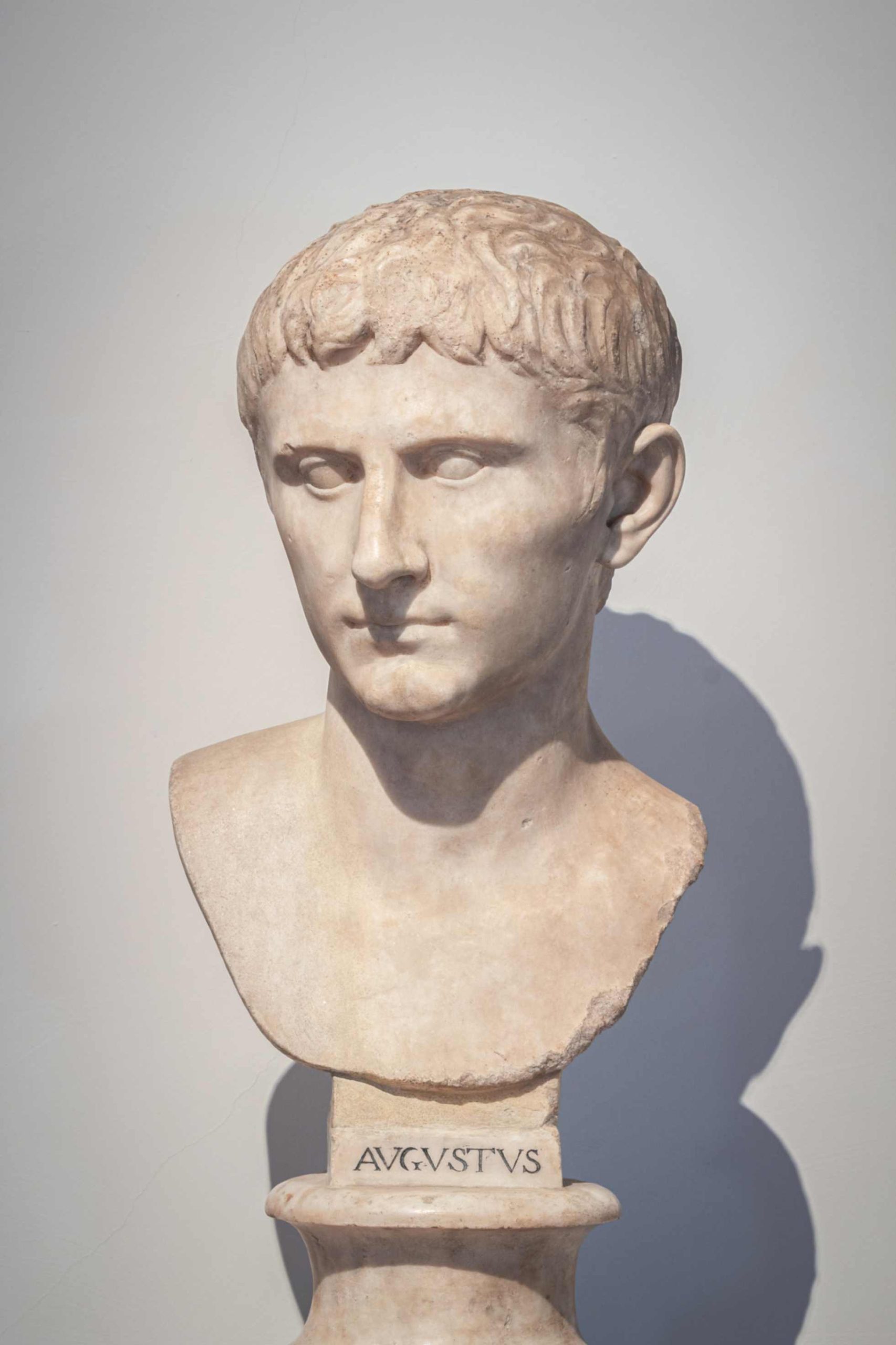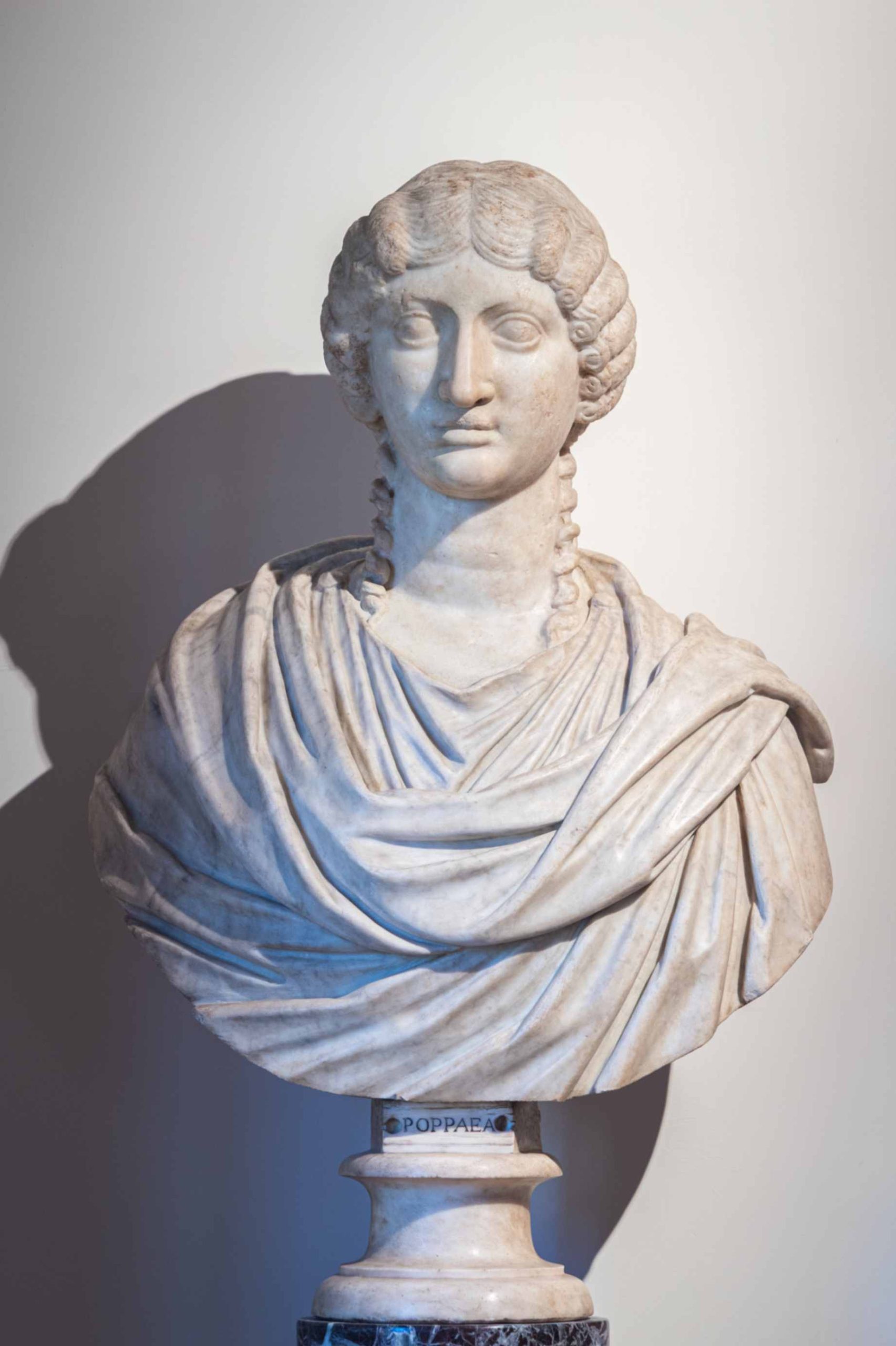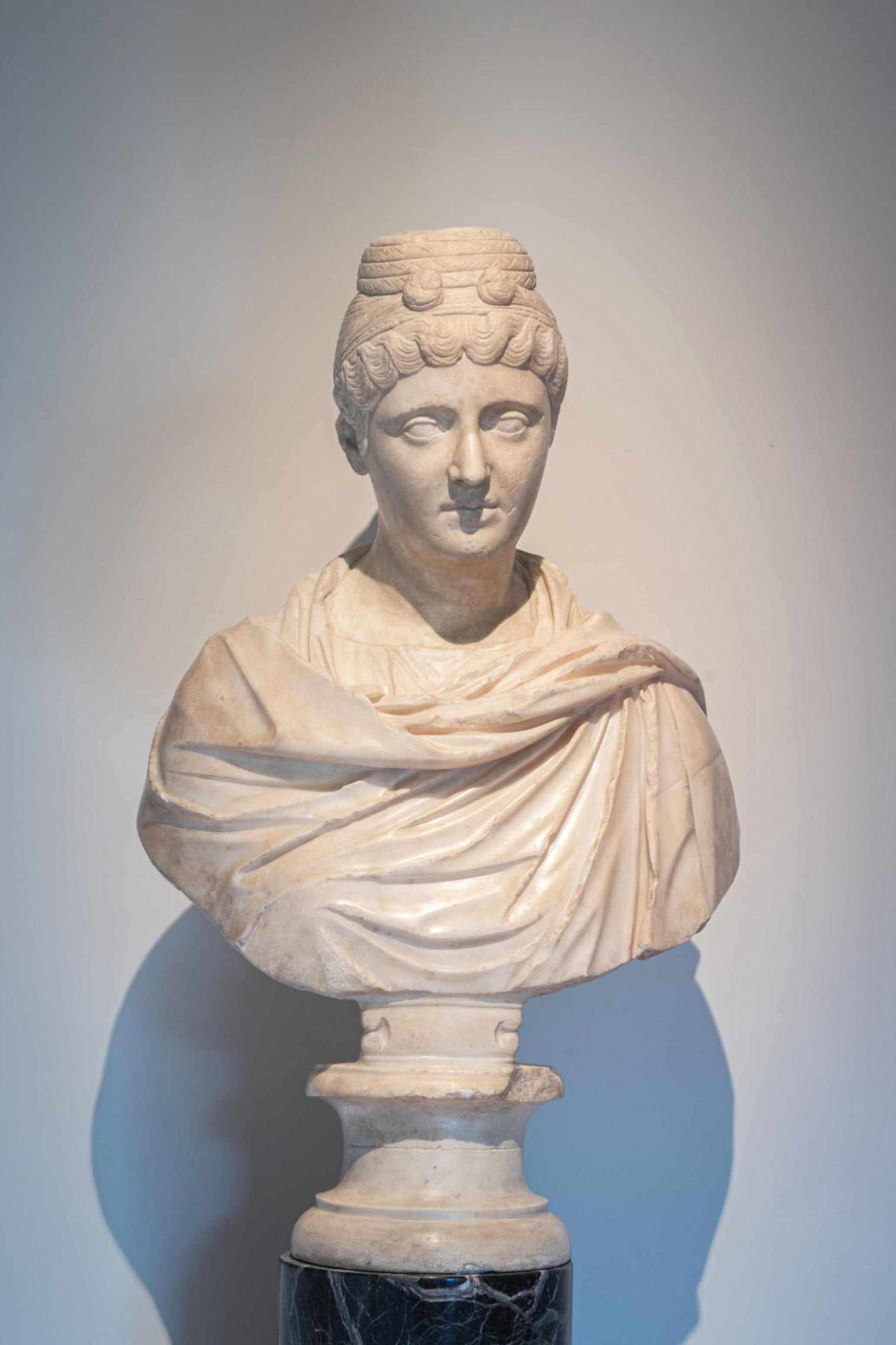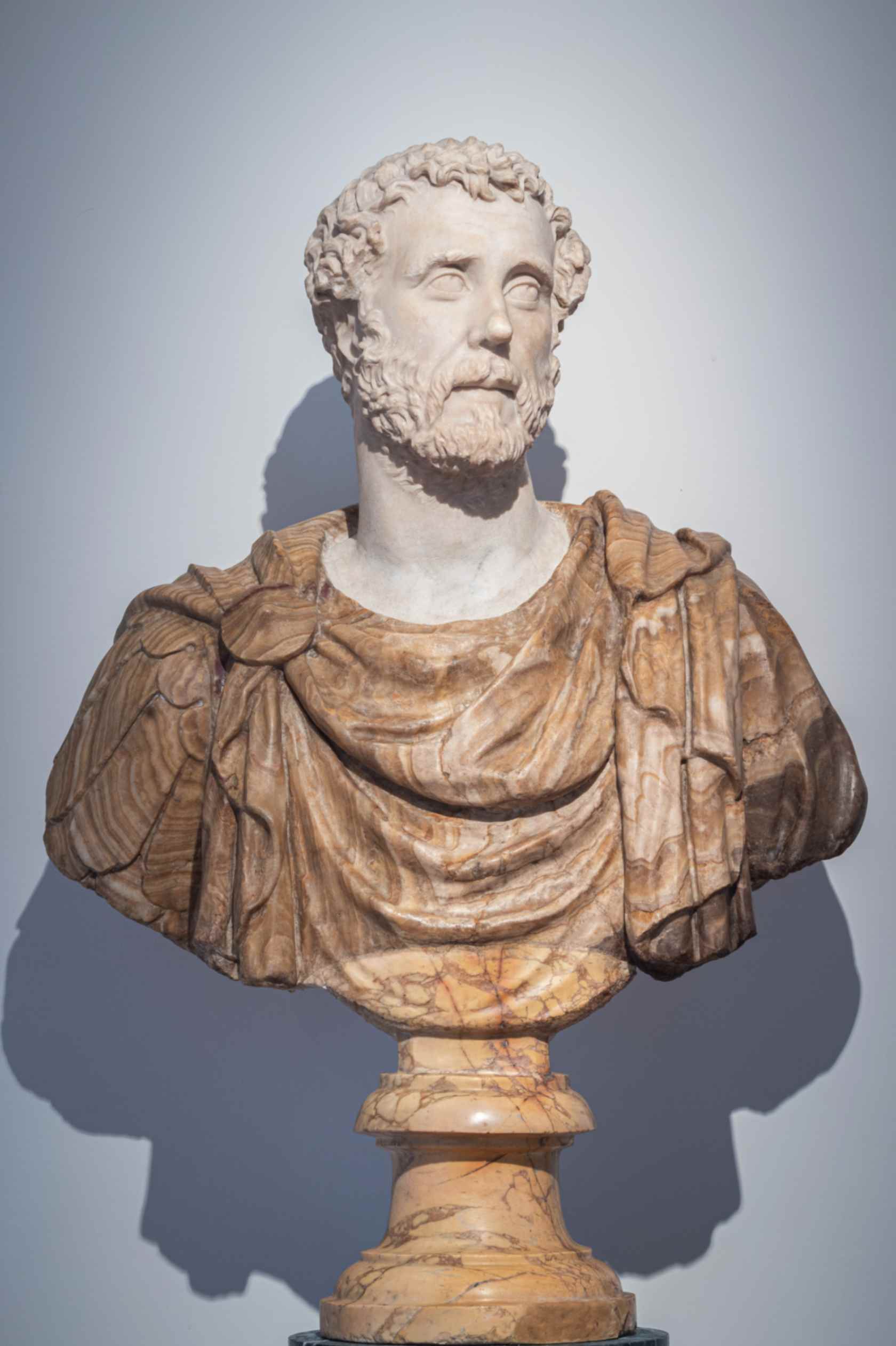CICERO, POPPEA, AUGUSTUS AND OTHERS: THE VASARI CORRIDOR AT THE UFFIZI WELCOMES HISTORICAL FIGURES, ROMAN AGE BUSTS
More than fifty Roman busts, true masterpieces of imperial portraiture, now adorn the section above the Ponte Vecchio within the renowned aerial passageway in the heart of Florence: they had been in storage since the 1990s
Uffizi director Simone Verde: ‘The ‘Future in the Ancient’ initiative is moving forward: today marks the opening of a new chapter in the appreciation of the Galleries’ priceless archaeological heritage.’
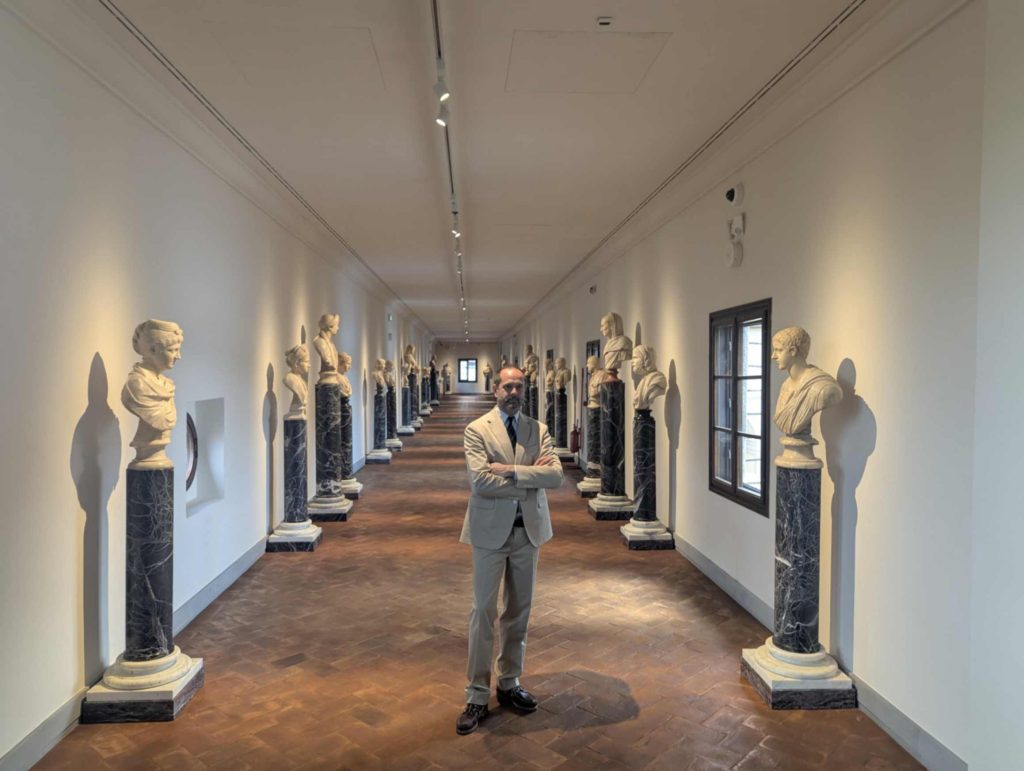
Intellectuals such as Cicero, emperors such as Augustus, Antoninus Pius, Commodus, and empresses such as Sabina, consort of Hadrian, and Faustina, wife of Antoninus Pius: these are some of the figures showcased in the new set-up of ancient Greco-Roman busts that embellishes the Ponte Vecchio section of the Vasari Corridor at the Uffizi Galleries. Until 1993, fifty sculptures, regarded as true masterpieces of Roman portraiture, adorned the three main corridors on the second floor of the Uffizi Galleries.
They had been removed in that year, following a decision to restore the museum‘s sculptural furnishings as illustrated by the iconographic and documentary sources from the mid-eighteenth century. All the portraits added to the Grand Ducal collections after that date were therefore destined for storage, including the sculptures carefully selected and purchased by the historical deputy director of the Uffizi, Luigi Lanzi, in the eighteenth century on the antique market to complement the collection of antiquities featuring imperial portraits in the Vasari spaces.
Thus, the introduction of the series of busts in the Corridor not only fits the notion of an arrangement suitable for a solemn path, which guided the lords of Florence from the Palazzo Pitti to the Uffizi complex, but also marks an essential return to public appreciation of a selection of Roman portraiture. This collection is of such high quality that, by the end of the eighteenth century, the Uffizi could compare itself equally with the finest Roman collections, notably the Capitoline Museums.
Uffizi Galleries: the Vasari Corridor welcomes more than fifty Roman busts. Photo Gallery
Uffizi Galleries director Simone Verde: “After the re-establishment of the Hall of Ancient Marbles on the Galleries’ second floor, this set-up represents another step forward. Under the motto ‘Future in the Ancient’, it furthers the enhancement of the Medici archaeological collections, which are featured at the Uffizi. This includes complexes such as the Niobe Hall, and the series of sculptures in the corridors reassembled according to the eighteenth-century order, later systematized in historical terms by the then deputy director of the Galleries, Luigi Lanzi. Additionally, there is an ambitious and evocative project currently underway to recreate the ancient layout of the inscriptions.”
LEGEND OF CHAPTERS ‘FUTURE IN THE ANCIENT AT THE UFFIZI’
I – Hall of Ancient Marbles
II – Rooms of the Flemish Masters
III – ‘Ancient’ Frames in the Rooms of the Flemish Masters
IV – Rearrangement of the Niobe Hall
V – Restoration of the Room of Mathematics
VI – The Roman busts return to the Vasari Corridor
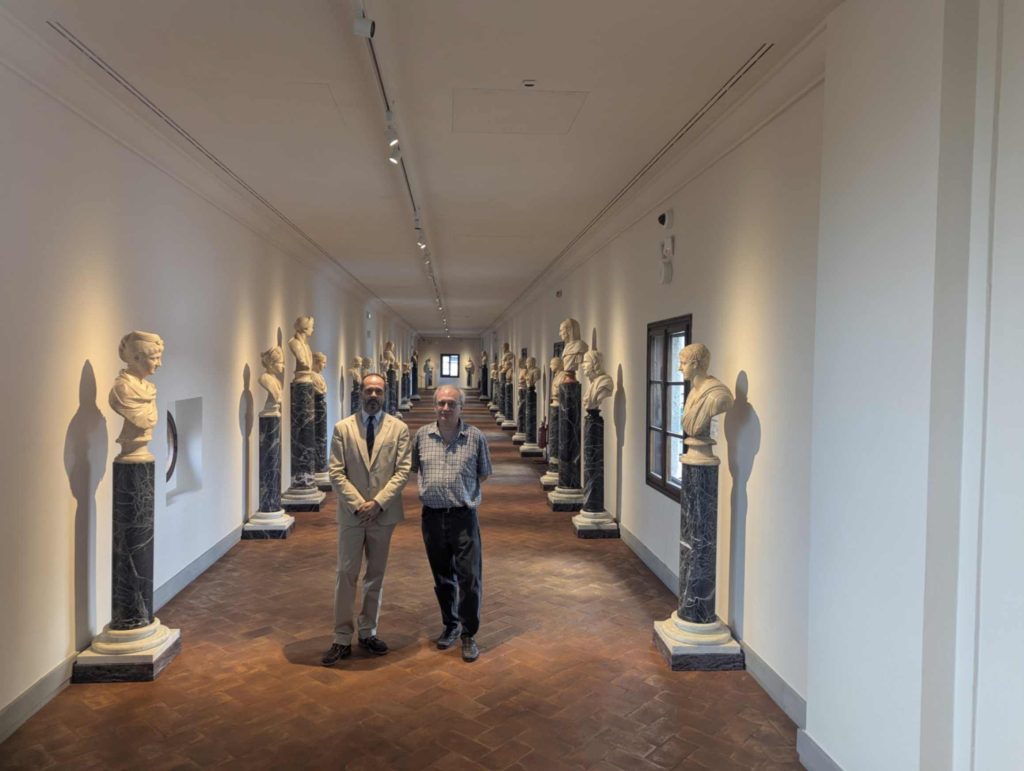
Press release from the Uffizi Galleries.

